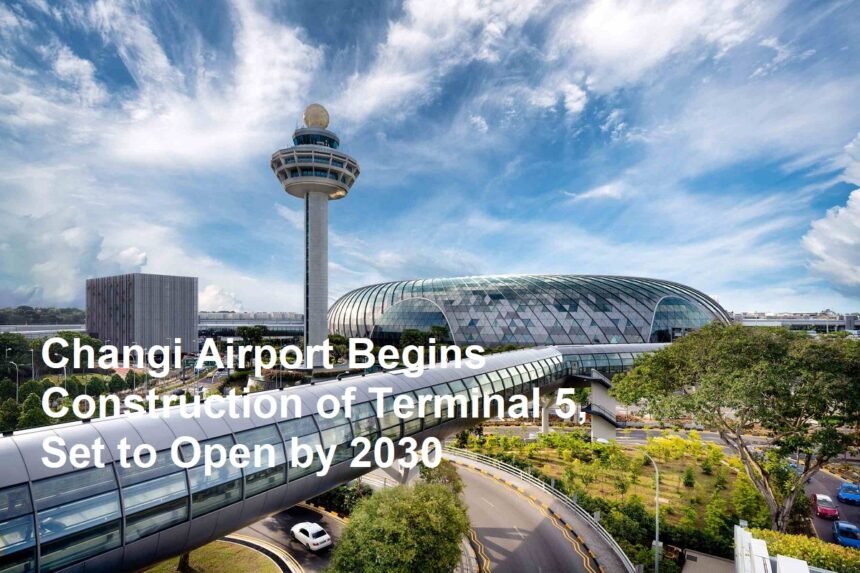On Wednesday, May 15, 2025, Singapore’s Changi Airport officially commenced the construction of its highly anticipated Terminal 5, a major infrastructure project expected to be completed by 2030. This ambitious development marks a significant milestone in the airport’s ongoing evolution as one of the world’s leading aviation hubs, designed to accommodate future growth in passenger traffic and enhance Singapore’s position as a global air travel and logistics center.
Terminal 5 is envisioned as a state-of-the-art facility that will dramatically increase Changi Airport’s capacity, enabling it to handle up to 50 million additional passengers annually once fully operational. This expansion is critical in response to the steady rise in air travel demand, driven by increasing connectivity, economic growth in the Asia-Pacific region, and Singapore’s strategic role as a key transit point between East and West.
The project’s timeline, spanning approximately five years, reflects the complexity and scale of the undertaking. Construction involves not only the terminal building itself but also extensive supporting infrastructure, including runways, taxiways, and transportation links to ensure seamless integration with the existing airport complex. The design emphasizes sustainability, efficiency, and passenger experience, incorporating cutting-edge technologies and environmentally friendly features to minimize the terminal’s carbon footprint.
One of the standout aspects of Terminal 5 is its focus on innovation and passenger comfort. The terminal is planned to include spacious, open-concept areas with abundant natural light, green spaces, and advanced digital systems to streamline check-in, security, and boarding processes. Automated technologies such as biometric identification and self-service kiosks are expected to enhance operational efficiency and reduce wait times, catering to the evolving expectations of modern travelers.
The development also aims to support Singapore’s broader economic and environmental goals. By expanding airport capacity, Terminal 5 will facilitate increased tourism, trade, and business activities, contributing to job creation and economic diversification. At the same time, the project incorporates sustainable design principles, including energy-efficient systems, water conservation measures, and the use of renewable materials, aligning with Singapore’s commitment to environmental stewardship and climate action.
Changi Airport’s Terminal 5 is not just an infrastructure project but a strategic investment in the future of air travel and Singapore’s connectivity. The airport has consistently ranked among the best globally, known for its exceptional service, amenities, and operational excellence. The new terminal is expected to build on this legacy, setting new standards for airport design and functionality.
The commencement of construction follows years of meticulous planning and consultation with stakeholders, including airlines, government agencies, and the public. The project also reflects Singapore’s confidence in the long-term growth of the aviation sector despite challenges such as the COVID-19 pandemic, which temporarily disrupted global travel. Terminal 5 symbolizes resilience and forward-thinking, preparing the airport to meet future demands and opportunities.
In addition to passenger services, Terminal 5 will enhance cargo handling capabilities, supporting Singapore’s role as a logistics hub. Efficient cargo operations are vital for the country’s economy, facilitating the movement of goods and supporting industries such as manufacturing, e-commerce, and pharmaceuticals. The terminal’s design integrates advanced cargo facilities to ensure smooth and secure freight handling.
The project is expected to generate significant employment opportunities during the construction phase and beyond, benefiting various sectors including construction, engineering, hospitality, and retail. The expanded terminal will also provide more space for commercial activities, offering travelers a wider range of shopping, dining, and entertainment options.
In conclusion, the start of construction for Changi Airport’s Terminal 5 on May 15, 2025, marks a transformative chapter in Singapore’s aviation history. With completion targeted for 2030, the terminal promises to enhance capacity, improve passenger experience, and support sustainable growth. This development reinforces Singapore’s status as a premier global aviation hub and reflects its commitment to innovation, connectivity, and environmental responsibility. As the project progresses, it will play a crucial role in shaping the future of air travel in the region and beyond.








